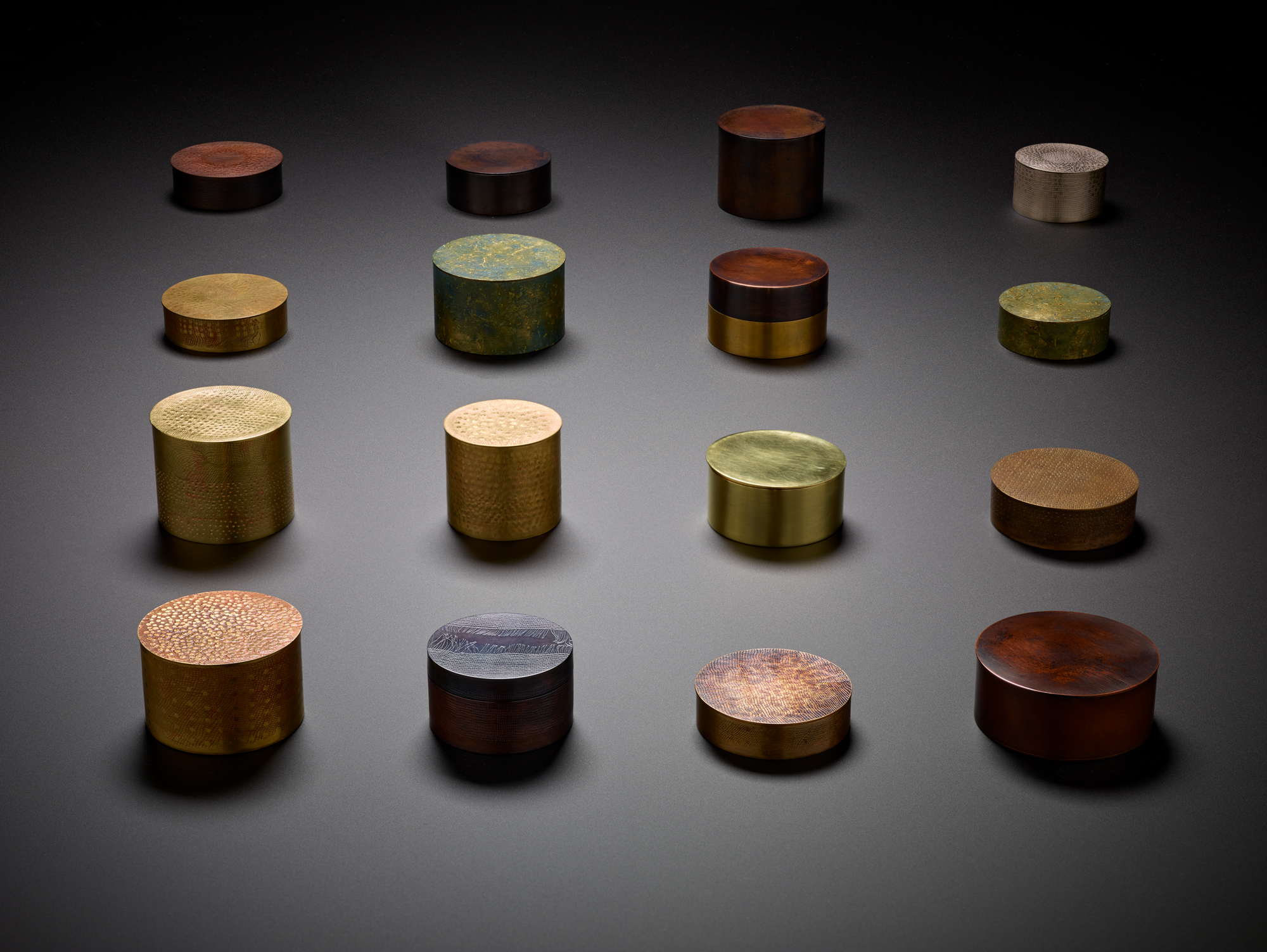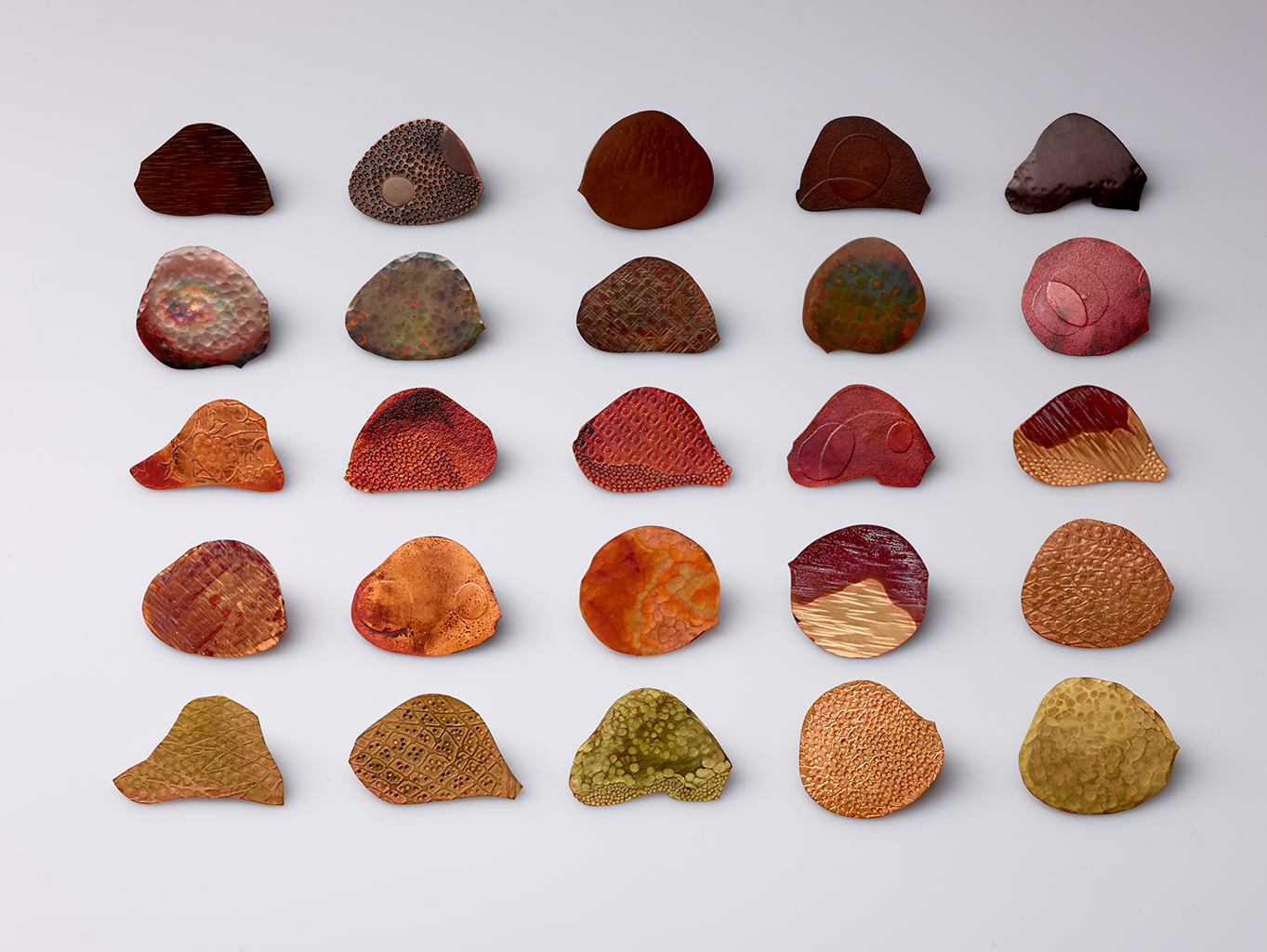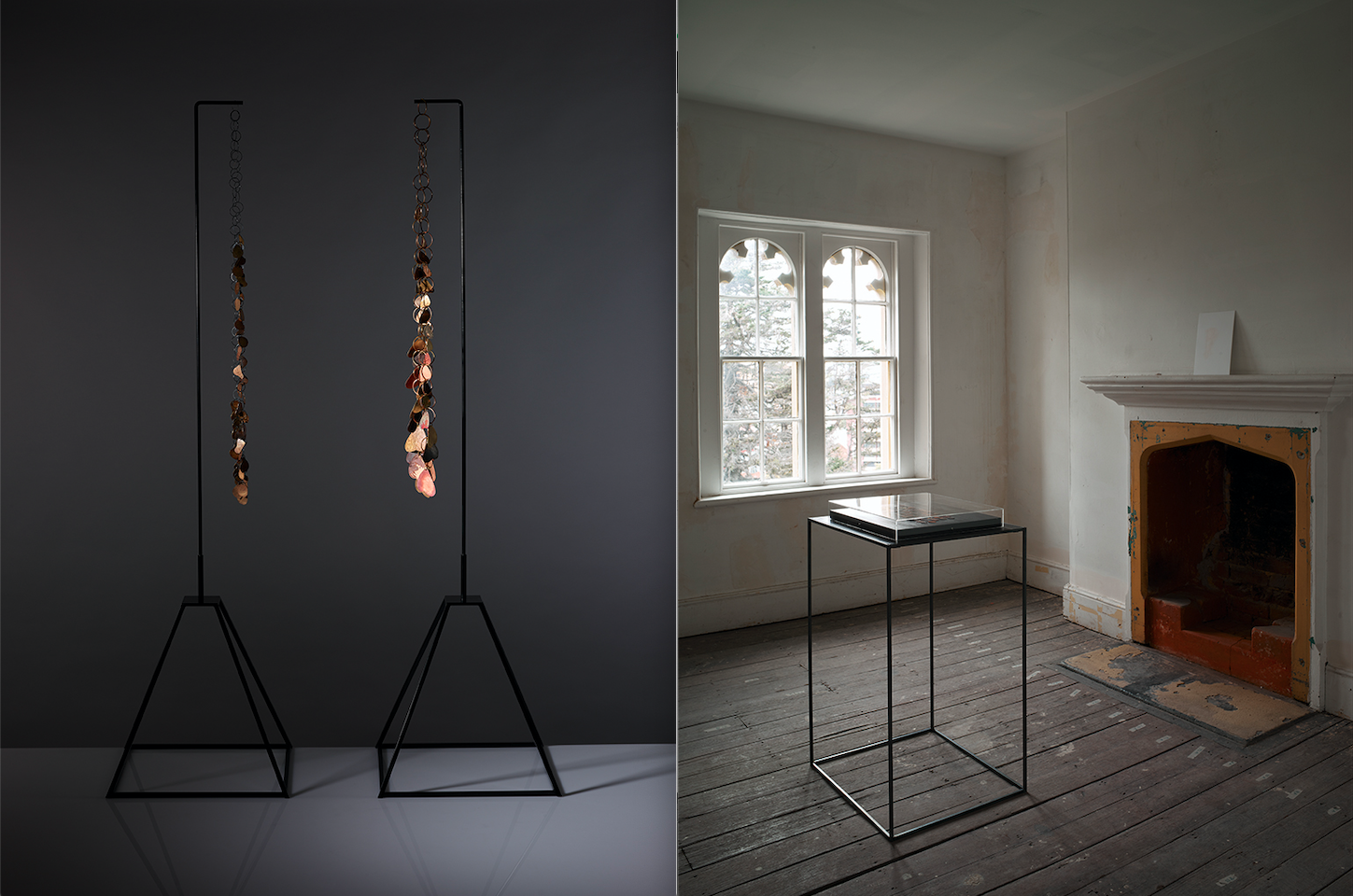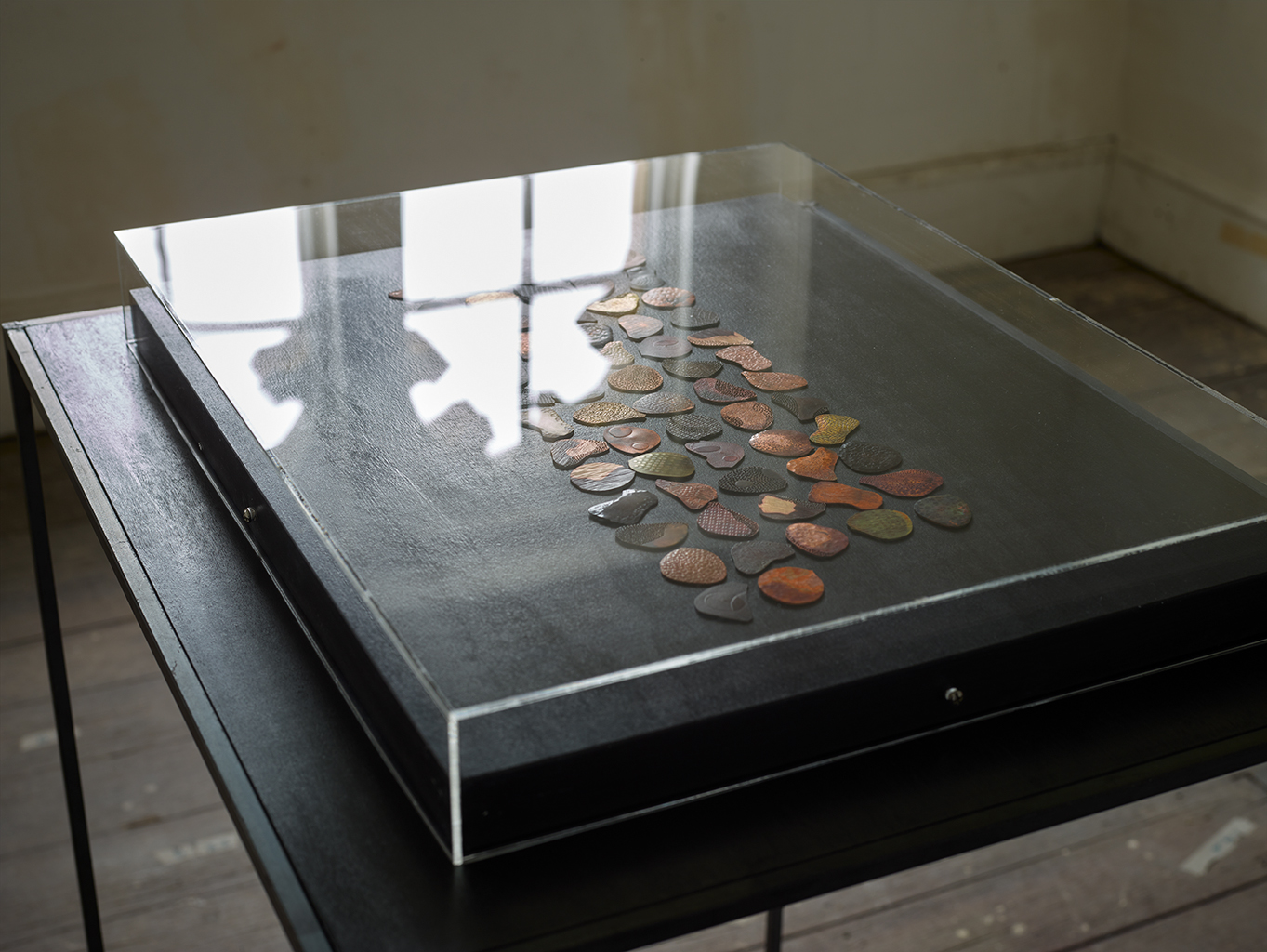
Designer Zoë Veness draws inspiration from the environment to craft intricate art-objects that ask big questions.
For jewellery artist Zoë Veness, art is a means to ground her experience. She creates contemporary jewellery and art-objects that capture the ephemeral, embody place and provoke discourse.
The Sydney-based designer experiments with repetitive forms of making, using paper or metal. Her pieces are characterised by intricate patinas and essential forms.
“I make objects ideally to be touched, held and worn,” she says. “Even though my practice focuses on exhibition work and the gallery setting, which prohibits artworks being touched, the idea of this sensory encounter … heighten[s] connections between objects and the viewer.”
In pursuit of pure form
Through her work, Dr Veness explores ideas about time and memory, place and materiality, and the social and commemorative value of jewellery.
“Jewellery is an ideal medium for me to explore intersections between art, craft and design,” the design lecturer at and alumna of UNSW Art & Design says.
Her pieces both celebrate and distil these concepts in pursuit of pure form. “Finding the simplest, most effective solution is another prevailing objective [in my practice],” she says.
This tension between the simple and the complex charges her oeuvre with vitality and uncommon beauty.

The path of inspiration
For her most recent exhibition, Wayfaring (2019-2020), a collaboration with colleagues from the University of Tasmania, Dr Veness created a series of artisanal vessels in brass, copper and sterling silver.
Wayfaring means to travel on foot, or to return alone to a path previously travelled with others, according to British anthropologist Tim Ingold.
The repeated use of the cylindrical form draws attention to the vessels’ elaborate surface detail. This was created by applying fine muslin to produce a trail of textures, a nuanced landscape in metal.
“[The] reverberations and echoes implied by [the] repeated forms and surface treatments … convey a sense of moving through space and time,” she says.
Wayfaring also “alludes to a slower, unhurried pace of making”, Dr Veness says, that supports “thinking through making”, as Tim Ingold calls it. As such, it also serves as a metaphor for her artistic practice.
Hers is a “reflective and open-ended process in which each design leads to the next exploration,” she says. “I often consider each work as a model or test for the next study.”

Translating the essence of place
The Wayfaring vessels build on ideas she explored in a previous exhibition, New Terrain in an Old World (2017). New Terrain… was inspired by the “unexpectedly sublime” alpine landscapes of Hobart’s kunanyi, or Mount Wellington as it is also known.
The project, funded by the Australia Council, combined metalsmithing and photography to convey the beauty of surface detail and play with scale. Her close-up photographs of the mountain’s textures created visual stimuli for the patinas expressed in her metalwork.
“Stretching for miles, [kunanyi] is a tree-less expanse of dolerite, shrubs and lichen that during the warmer months create carpets of copper, burgundy and green hues. In winter this expanse is transformed by snow,” Dr Veness says.
“New Terrain… was developed in response to this ancient place where one can encounter a sense of deep time. [The] small vessels echo landscapes and [the necklaces created as] a long loop of insect wings reference the smallest butterfly, the Ptunarra Brown, a threatened species found only in Tasmania.”
The Wayfaring vessels by contrast were informed by a very different environmental context.
“The Wayfaring series was made in my workshop at Jervis Bay in the heat of summer, against a backdrop of scribbly gums and banksias. In Wayfaring these two worlds interweave with memories of pink dolerite vistas overlaid by views through my window of scribbly gum forests.”

Remembering lives lost in rose petals
The evocation of the environment in her work is also evident in Dr Veness’s 2017 series of brooch pins for the exhibition, Remanence. Fifty years on from the 1967 Tasmanian bushfires, the exhibition drew together artists, working across diverse mediums, whose work responds to how fire has shaped the landscape and affected the psyche.
The title links continuity with remains, or the idea that forces linger long after an event like the bushfires has passed.
“In the exhibition, fire was envisaged as a destructive force and ever-present threat, as well as a sculpting force and mechanism of resistance and renewal across the island,” she says.
Dr Veness, who was also involved in the exhibition’s curation, exhibited a series of works including Rose Petal Pins 2016-2017, 62 lapel pins crafted from brass, copper and sterling silver to commemorate the 62 lives lost in the fire.
It was “a difficult body of work to make given the gravity of the occasion. I have created many brooch pins for individuals and ceremonial occasions, however, never in remembrance for those who have died”.
The series was also developed with the exhibition space, Domain House – a “magnificent sandstone building in Hobart” in mind.
“I was privileged to be able to develop the series with two small interconnected rooms in mind that were located in the top corner of the building. The quietness of the space and its seclusion from the rest of the building contributed to an atmosphere of reverence.”
The rose petal is also associated with both love and death in Western cultures, she says. In addition to being a motif of romance, roses – and flowers more generally – are used in still life paintings (natura morte) to signify mortality, death and decay, she says.
“My intention with the pins is that when they are worn over the heart they signify love and affection.”
The rose petal pins’ fine detail begs closer inspection creating an intimacy with the viewer. The petals were coloured using the heat of her torch. Though different to the destructive power of the bushfires, her torch flame echoed their unpredictability, pivoting from pink to gold to purple. No outcome was the same. Their distinctive patinas and hues evoke the unique lives they commemorate.
Dr Veness’s jewellery has been exhibited extensively around the world, and is held in private and public collections including the National Gallery of Australia and the Art Gallery of South Australia.
